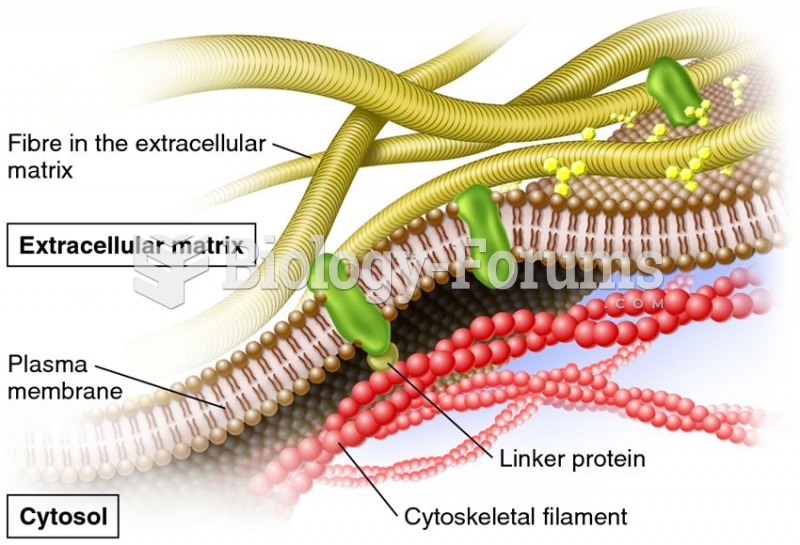|
|
|
The horizontal fraction bar was introduced by the Arabs.
The first documented use of surgical anesthesia in the United States was in Connecticut in 1844.
There are major differences in the metabolism of morphine and the illegal drug heroin. Morphine mostly produces its CNS effects through m-receptors, and at k- and d-receptors. Heroin has a slight affinity for opiate receptors. Most of its actions are due to metabolism to active metabolites (6-acetylmorphine, morphine, and morphine-6-glucuronide).
Most childhood vaccines are 90–99% effective in preventing disease. Side effects are rarely serious.
In 1835 it was discovered that a disease of silkworms known as muscardine could be transferred from one silkworm to another, and was caused by a fungus.
 Attachment of transmembrane proteins to the cytoskeleton and extracellular matrix of an animal cell.
Attachment of transmembrane proteins to the cytoskeleton and extracellular matrix of an animal cell.
 Some red squirrels adopt the offspring of related individuals, a likely example of kin selection pro
Some red squirrels adopt the offspring of related individuals, a likely example of kin selection pro





